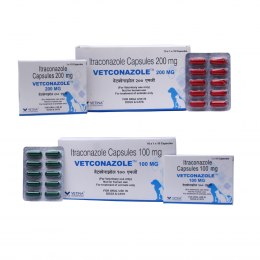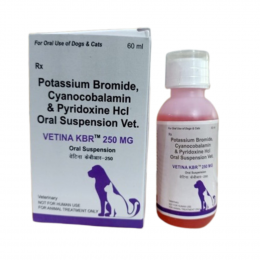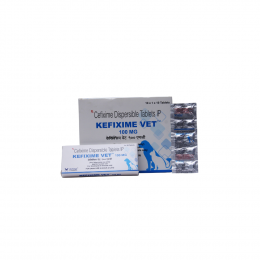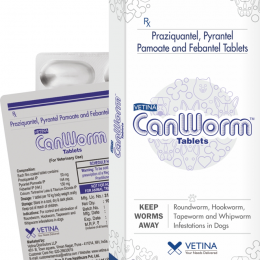Vetina’s Gabapentin Tablet
Description:
VETINA GABAPENTINTM containing 100 mg of Gabapentin Gabapentin is a synthetic analogue of the neurotransmitter gamma-aminobutyric acid with anticonvulsant activity.
Indications:
- Seizures,
- Gabapentin may be useful as adjunctive therapy for refractory or complex partial seizures, or in the treatment of chronic pain in dogs or cats.
Composition: 100 mg
Each film coated tablet contains:
- Gabapentin IP……………100 mg
- Excipients…………….…..q.s.
Composition:300 mg
Each film coated tablet contains:
- Gabapentin IP……………300 mg
- Excipients…………….…..q.s.
CLINICAL PHARMACOLOGY:
- Gabapentin is an anti-epileptic agent but now it is also recommended as first line agent in neuropathic pain, particularly in diabetic neuropathy (nerve damage due to diabetes) and post herpetic neuralgia (The condition affects nerve fibers and skin, causing burning pain).
- α2δ-1, an auxillary subunit of voltage gated calcium channels, is the main target and its specific binding to this subunit is described to produce different actions responsible for pain attenuation.
CONTRAINDICATIONS:
- Gabapentin is considered contraindicated in patients hypersensitive to it.
- It should be used with caution in patients with renal insufficiency, Because gabapentin is eliminated via renal routes .
- In dogs, the drug is also metabolized (30 – 40%) of a dose, so dosage adjustment may not be required in dogs with mild to moderate renal dysfunction
ADVERSE REACTIONS:
- Sedation is probably the most likely adverse effect seen in small animals. Starting the dose at the lower end of the range and increasing with time, may alleviate this effect.
Presentation: 1×10 TAB
Dosage :
|
Drug |
Dosage and Frequency |
Half Life |
Time to Steady State |
Therapeutic level |
Adverse Effect / Comments |
|
Gabapentin |
Dogs: 10 mg/kg, PO, tid; up to 30–60 mg/kg, tid |
3–4 hr |
<24 hr |
4–16 mg/La (70–120 μmol/L) |
Sedation, dizziness, ataxia, fatigue, diarrhea; reduce dose with renal dysfunction. |




